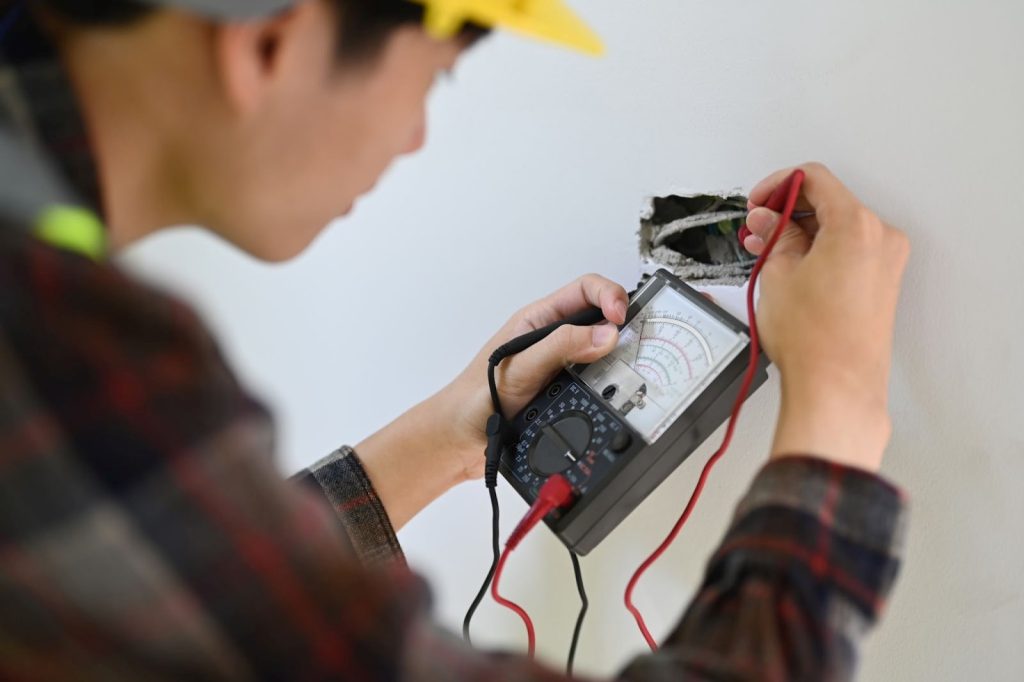Legionella is a form of bacteria that thrives in water and can spread by breathing in droplets of water containing the bacteria itself.
Why is Legionella dangerous?
LEGIONELLA BACTERIA CAN LEAD TO VARIOUS DISEASES, SOME OF WHICH CAN BE FATAL.
Legionellosis is the term used for a collection of diseases caused by legionella bacteria and the most serious being Legionnaires’ disease, you also have a lot of conditions that are similar to Legionnaires’ disease but not quite as serious such as Pontiac fever and Lochgoilhead fever. Legionnaires’ disease can be a fatal form of pneumonia and everyone and anyone can contract it and suffer from the symptoms. See symptoms of Legionnaires’ disease further down this blog.
In the right conditions, this potentially fatal bacteria may grow and thrive. therefore increasing the risks of people contracting Legionnaires’ disease so it is vitally important to control the risks by introducing the appropriate health and safety measures such as a Legionella Risk Assessment and Legionella Testing.
What is Legionnaires’ Disease?
As we already know, Legionella is bacteria that can cause diseases such as Legionnaires’ Disease which is a serious form of pneumonia that can be fatal in up to 1 in 3 cases. You can contract Legionnaires’ Disease by breathing in small droplets of water in the air (aerosols) that contain the Legionella Bacteria.
The Disease got named after its first outbreak back in the 1970s after infecting an American legion convention. Out of the 2000 attendees at the convention, 182 of those people were infected and 29 people, unfortunately, died from the disease outbreak.
What are the Symptoms of Legionnaires Disease?
The Symptoms that are caused by the contraction of Legionnaires Disease are similar to some flu-like symptoms such as:
- Fever
- Headaches
- Fatigue (extreme tiredness)
- Muscle & Joint Aches
When Legionnairs’ disease worsens, you may experience:
- Breathing Difficulties/Shortness of breath
- Chest Pain
- Green Coloured Phlegm
- Confusion
If you do develop any of these symptoms or feel extremely ill you should contact your doctor/GP and seek assistance right away.
How is Legionnaires Disease Treated?
You may need to be admitted into the hospital if you contract Legionnaires’ disease.
When in hospital, your treatment in hospital may include:
- antibiotics are given through intravenous treatment
- oxygen given through a face mask or tubes
- In worst cases, you may need a ventilator: a machine to help you breathe
When your health starts to improve you may be able to take antibiotic tablets at your home and leave the hospital. Antibiotic treatment can last as long as 3 weeks. Most patients recover fully, but it might take a few weeks to get back to feeling normal.
It is not unusual for patients suffering from Legionnaires’ disease to be sometimes admitted to an intensive care unit. Some also suffer long-term symptoms. Studies have shown in the past that recovered patients have shown long-term fatigue, neurologic symptoms, and neuromuscular symptoms for up to months after diagnosis.
How does Legionella Bacteria spread?
LEGIONELLA BACTERIA WILL SPREAD WHEN TINY DROPLETS OF WATER CONTAINING LEGIONELLA ARE INHALED
Legionella bacteria spreads by breathing in small droplets of water that are present in the air where legionella bacteria is present. There are certain conditions that legionella bacteria thrives in and you are more likely to contract it if:
- the temperature of the water in all or some areas of the water system may be between 20-45 °C, which is ideal for legionella to thrive
- Aerosols can be created; if water droplets are dispersed and become breathable
- water is laying for a while or laying a while then recirculated
- there is rust or scale present, this can provide growth for bacteria such as legionella
After Legionella grows and breeds in a building’s water system, water containing Legionella can spread if the water droplets disperse in small enough size for a person to inhale. Therefore, this can lead to people contracting Legionnaires’ disease or Pontiac fever when they breathe in small droplets of water in the air that contain the bacteria.
Another less common way people can contract legionella related diseases is by drinking water containing legionella. This only really occurs when people accidentally breathe it in whilst drinking, the people most at risk of this are those with breathing problems.
In most cases, you can’t pass on legionella caused diseases to someone else, the chances of this are very slim.
Individuals who are more vulnerable to Legionella Bacteria
Most generally healthy people who are exposed to Legionella will not get too sick. People more at increased risk of getting serious ill are:
- People older than 50 years
- People who currently smoke or have in the past
- People with a type of chronic lung disease (for example, chronic obstructive pulmonary disease)
- People with a weakened immune system or who take immune suppressant drugs such as chemotherapy
- People who have cancer
- People with underlying health issues like diabetes or liver failure
What properties are at risk of having Legionella Bacteria?
LEGIONELLA RISK LEVELS
High-Risk Situations
- Swimming Pools, Jacuzzi’s, & Spas.
- Properties Inhabited by Vulnerable Groups such as elderly Care Homes and Hospitals.
- Cooling Towers.
- Premises with Complex Water Systems.
- Premises that have been lying vacant for a prolonged period.
These high-risk properties and complex water systems should be monitoring their water more often than lower-risk properties with shared premises such as public swimming pools being advised to conduct a Legionella Risk Assessment every 3 months.
Medium Risk Situations
- Largely populated premises such as factories, hotels, office building, and airports.
- Hot and Cold temperature water systems.
- Processed water systems.
Low-Risk Situations
- Remote Areas where there is not as much of a chance of Bacteria like Legionella Spreading.
- Property no water system.
- Buildings with simple water systems.
How to Identify Legionella and stop it from spreading
THE BEST WAY TO IDENTIFY LEGIONELLA AND PREVENT IT IS BY CARRYING OUT A LEGIONELLA RISK ASSESSMENT
A Legionella Risk Assessment is exactly what it sounds like! Carrying out a Legionella Risk Assessment (LRA) is by far the most efficient way to identify Legionella bacteria and stop them from spreading.
So what is involved in a Legionella Risk Assessment?
In a Legionella Risk Assessment, all water sources at the premises will be checked. An LRA will include:
- Checking all water sources (water outlets, water heaters and pipework in your premises) assessing for potential water hazards such as legionella bacteria.
- Who is at risk from these dangers at the premises?
- Hot and cold water Temperature Checks
- Establishing if any Legionella bacteria is present in the property’s water.
- Putting in place the required safety measurements to minimise the risk of Legionella bacteria spreading in the premises.
- Recording the evidence found and producing a Legionella Risk Assessment Report.
Want to learn more about Legionella bacteria and how to prevent it from spreading by carrying out a Legionella Risk Assessment? Read more information and even book a Legionella Risk Assessment for domestic or commercial properties to protect you and/or your staff from Legionella caused disease with LegionellaRiskandPat.com


